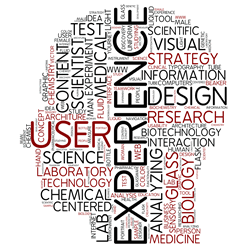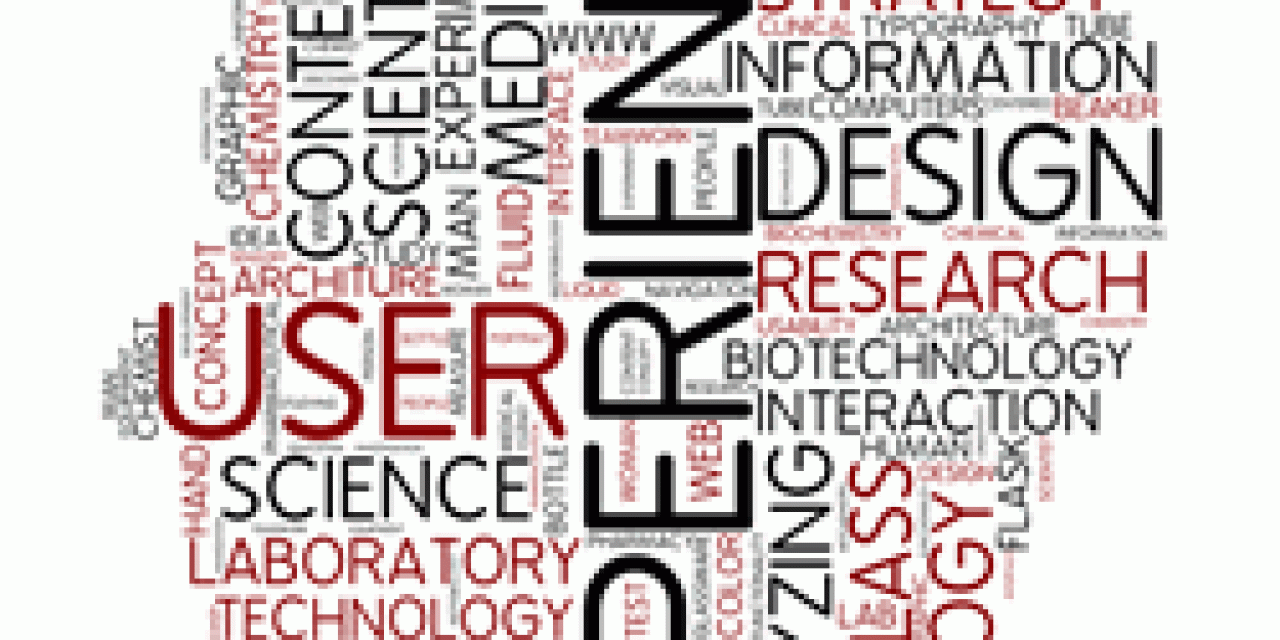
Although there is a big difference between customer experience and user experience, both are also related. Many techniques and approaches in customer experience management, customer journey mapping, etc. can also be found in user experience and service design.
As a matter of fact, if we want to improve customer experiences we also need to improve user experiences in several ways and conduct user research.
The difference between customer experience and user experience looks pretty straightforward: the customer experience is generally defined as the sum of all experiences an individual has in relationship to your brand, services, content, touchpoints, interactions, employees, products and so on.
This end-to-end customer experience view is important. However, at least as important is the single customer experience, which each one being part of that sum and a highly emotional and subconscious given.
Defining the customer experience and customer experiences – and how they interact
Both the end-to-end customer experience and single customer experiences can be gauged in several ways.
Obviously, perceptions are highly individual and the rich complexity of single individual experiences and the individual end-to-end experience can be taken into account when laying the foundations for customer-centric processes, services, interactions and ways of doing business.
The main reasons to use such a combined approach is that it enables you to identify the core priorities and detect leaks and poor experiences that need rapid attention. It also shows the relationships between experiences.
An example. Even if the overall end-to-end customer experience with an airline company can be good, one really negative single experience in an area that matters most for the individual customer, can result in the end of the business relationship. Being treated badly by one airline company contact center agent might, for instance, kill all the efforts you’ve done to make the end-to-end customer experience (from the booking process to the quality of service on board of the planes) very positive.
The other way, around a positive end-to-end customer experience (and sometimes the lack of choice, resistance to changing existing suppliers and various emotional reasons) can make up for a very bad single customer experience.
Defining the user experience – and how it’s different
The user experience is traditionally defined as the overall experience when using a specific product, software application, website, etc. Or in other words: all elements regarding the usage and experience of a rather single process, service or product. In the area of websites and conversion optimization, for instance, the term user experience is typically more prevalent than customer experience. And the same goes for IT applications.
Many people, including user and customer experience experts, employ both terms in an interchangeable way, mainly depending on their background of field of expertise.
When we look at the definition of user experience by the Nielsen Norman Group and its user experience gurus of respectively Web page usability and workable technology, Jakob Nielsen and Don Norman, for instance, we see that they define user experience as follows: “User experience encompasses all aspects of the end-user’s interaction with the company, its services, and its products”. In more than one way this overlaps with the definition of customer experience.
Nevertheless, there are differences. One of the areas where this becomes clear concerns metrics and measurement.
- In user experience (for example in a website context) we will look at how long it takes to fulfill a specific task, at conversion rates, etc.
- In customer experience we will look at the probability of customers recommending a company/brand/product/service to others (where the famous Net Promoter Score, to name one method, comes in), the end-to-end experience, emotional parameters, etc.
Connecting customer experience and user experience
Despite these differences, what matters most is understanding how both are – increasingly – connected.
A few examples of how user experience and customer experience are closely related to illustrate it all.
How user experiences affect customer experiences in the contact center
When a customer gets in touch with a customer service or contact center agent, the experience will be shaped by that very interaction.
If the software and other resources the agent has to service customers are not user-friendly or easy to find (think about information…) and thus provide a poor user experience for that agent, this will affect the work of the agent and as a consequence the experience of the customer regarding the quality of that work and the customer service experience at that point in time. Note: customer experience is not just about customer service – here’s a good reminder.
Employees and the link between user and customer experience
At several occasions we have advised to broaden the definition of a customer in increasingly connected and digital times for various reasons. One of these reasons is that “users” such as employees want to have the same level of both customer and user experience they enjoy elsewhere in doing their work and thus the applications they use.
There is a clear shift going on in IT in this regard, whereby the user experience (and as a consequence also actual usage and success) regarding enterprise applications (for work purposes in our example) becomes key. The days where IT said “here’s the new application, use it” are over. Another reason for this call to be, in the end, more people-centric is the direct link between employee satisfaction and customer satisfaction in many regards.
Digital: when user experience virtually equals customer experience
Last, but not least, user experience and customer experience obviously don’t live in silos, certainly not in the eyes of the beholder: the customer. Part of a holistic customer-centric business strategy, regardless of the business function, is connecting both.
Again an example: in increasingly digital times where customers use more digital channels across and also before and after their actual buying journey, user experience and customer experience go hand in hand. When the front-end tools on your website fail because from a usability AND a user experience viewpoint, they are poorly conceived, this directly impacts the customer experience. If, on top of that, there is a disconnect between the front-end and the backoffice and it shows in the end-to-end customer experience, with several leaks as a result, things get even worse. It’s not a coincidence that many organizations start looking at digital customer experience.
Customer effort and frictionless experiences
According to us, an essential area where both user experience and customer experience overlap and increasingly will is in making the customer experience, buying journey, user experience (and so much more people-oriented processes and services) hassle-free, clear, frictionless and utterly customer-oriented.
This will show in the increasing use of metrics from both disciplines that focus on how successfully people can perform tasks, experience satisfaction and how you can make life easy for them. A metric to keep in mind in that regard: the Customer Effort Score.
Making life hard for users and customers is not just the fastest way to failure in various areas, it also has very emotional and tangible consequences in times where customer AND user expectations have risen a lot.
Images purchased under license from Shutterstock






